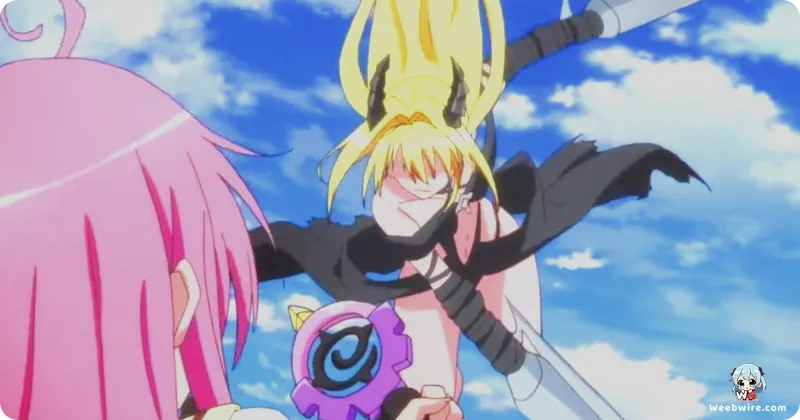The Unseen Genius: How Linguistic Puns, a Shonen Veteran, and a Cursed Protagonist Engineered the Enduring Success of 'To Love Ru'

Since its debut in 2008, the To Love Ru anime adaptation has established itself as a foundational work within the modern ecchi and harem genres. While widely recognized for its extensive fan service and the chaotic misadventures of protagonist Rito Yuuki, the series possesses a notable depth of creative and linguistic details. This structure suggests that its sustained global appeal is the result of deliberate design rather than mere chance.
The Clever Linguistic Fusion of the Title
One of the most intriguing creative decisions is embedded within the series’ branding: the title itself. The Japanese title, To LOVEru (To LOVEる), represents a sophisticated linguistic fusion. It combines the English phrase “To Love” with the Japanese verb ending ru (る). This combination generates a unique phrase that sounds like a native Japanese verb meaning “to fall in love” or “to be actively loving.” This boundary-crossing pun immediately sets the narrative tone, which centers on the chaotic yet tender integration of the alien princess, Lala Satalin Deviluke, into Rito’s otherwise ordinary high school life. This linguistic detail serves as a subtle yet potent example of the thoughtful structure underpinning the entire franchise.
Kentaro Yabuki's Artistic Precision
The visual identity of To Love Ru is fundamentally built upon the work of illustrator Kentaro Yabuki. Although the story was written by Saki Hasemi, Yabuki's artistic skill was the primary driver of the manga's immense popularity. Readers may recall that Yabuki previously led the production of the dark, action-heavy shonen series Black Cat. His transition from serious action to romantic comedy and ecchi was unexpected but proved highly effective. He applied his refined skills, characterized by dynamic framing, detailed anatomy, and fluid action sequences, directly to the fan service elements. This dedication ensured that even the most slapstick or visually provocative moments were rendered with an exceptional level of quality and anatomical precision, distinguishing To Love Ru from many of its genre competitors. Yabuki’s unique background directly informs the franchise’s visual excellence.
The Narrative Engine: Rito's Accidental Clumsiness
Furthermore, the central comedic device, Rito Yuuki’s almost supernatural tendency to trip into compromising positions, is more than just a recurring gag. It functions as the essential narrative mechanism. Rito’s consistent, catastrophic clumsiness acts as a structural plot engine, providing a constant source of tension and humor that fans often refer to as the ‘Rito Curse’ or the ‘Accidental Harem Protagonist Power.’ The series’ premise relies fundamentally on the audience accepting this highly improbable, sustained misfortune. By making the protagonist’s greatest failing the ultimate catalyst for continuous plot movement, the creators ensured the comedic premise would remain fresh.
The anime adaptation, produced by Studio Xebec, faced notable production challenges, particularly regarding visual fidelity and censorship standards. The initial 2008 broadcast necessitated heavy censorship, often involving beams of light or fog effects, to comply with television regulations. This necessity spurred significant fan discussion. Consequently, OVA (Original Video Animation) and uncensored Blu-ray releases became crucial for delivering the complete, unadulterated visuals that Yabuki’s art demanded. This strategic tiered release was vital for satisfying the dedicated core audience. Xebec successfully maintained high standards through subsequent series, including the acclaimed To Love Ru Darkness, before the studio eventually dissolved, leaving the franchise as one of its defining late-era successes.
The Evolution with To Love Ru Darkness
The transition into To Love Ru Darkness marked a strategic evolution in character focus and narrative scope.

While the original series centered on the Rito, Lala, and Haruna dynamic, Darkness shifted the narrative spotlight onto Momo Belia Deviluke and Yami (Golden Darkness). Momo's proactive goal of constructing a massive harem for Rito introduced a fresh, driving plot momentum that moved beyond simple romantic misunderstandings. Concurrently, the deeper exploration of Yami’s powers and complex backstory significantly enhanced the franchise’s sci-fi and action elements. This successful expansion demonstrated the creators’ ability to revitalize the story, confirming that To Love Ru is a meticulously constructed piece of popular culture capable of continuous growth and refinement.
Credits
To Love Ru
Author
Saki Hasemi
Cover Art
Kentaro Yabuki
Studio
Xebec
Publisher
Shueisha
Producers





